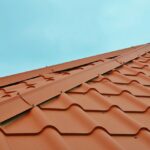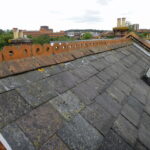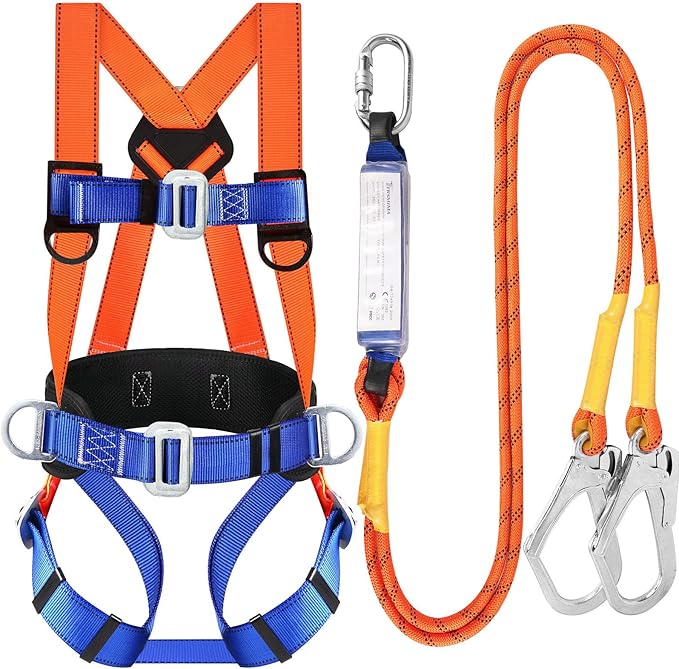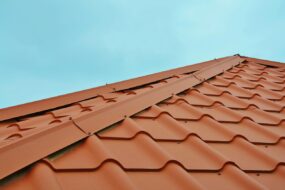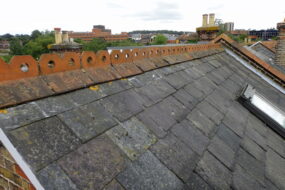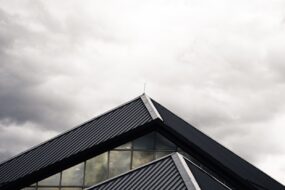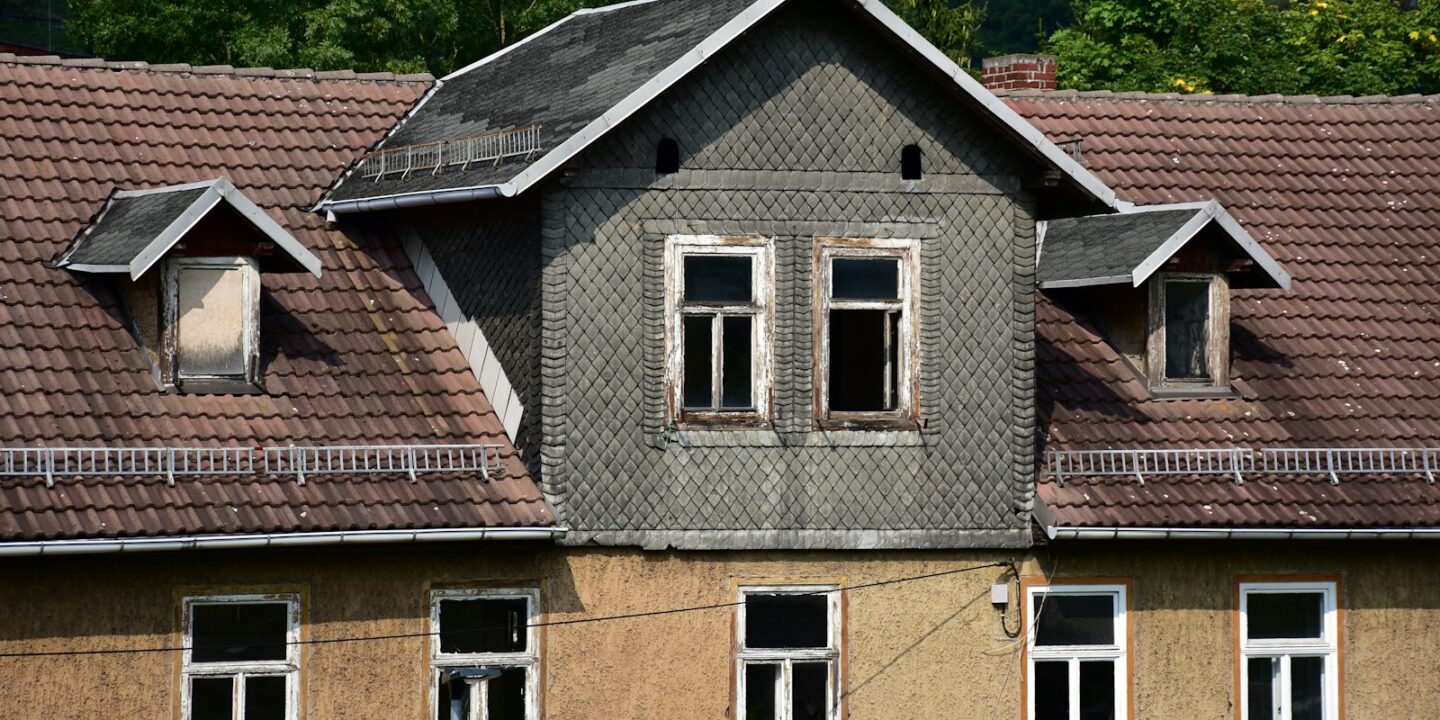
Rain doesn’t negotiate with a bad detail. Around Seattle and the rest of Western Washington, long wet seasons and wind-driven rain will sniff out weak spots fast. Most leaks don’t start in the middle of a roof, they begin at transitions. That’s why knowing the signs of roof flashing failure matters. If we catch flashing issues early, we can save sheathing, insulation, and, frankly, our weekend plans.
In this guide, we’ll show where flashing fails, the exterior and interior red flags to watch, what causes them, and how to inspect safely before deciding on DIY vs. pro roof repair. Flashing plays a critical role in the roofing system, helping to direct water away from vulnerable areas and prevent leaks. When flashing fails, it can quickly lead to serious trouble, including water damage, moisture buildup, and mildew growth. Many homeowners overlook these warning signs, leading to costly repairs or even roof replacement down the line.
What Roof Flashing Is And Where It Commonly Fails
Flashing is the metal layer (or sometimes a high-grade membrane made from high quality materials) that seals joints where different parts of the roof meet, think walls, chimneys, skylights, vents, roof valleys, and edges. It’s the unsung detail that keeps water moving out and off, not in, creating a protective seal.
We see several types: step flashing along sidewalls under asphalt shingles: headwall/apron flashing where a roof dies into a vertical wall: counterflashing set into brick or stucco that overlaps base flashing: valley flashing channeling water where two slopes meet: pipe boot flashings around vents: and kick-out flashing at the bottom of a wall-to-roof intersection to push water into the gutter.
Where does it fail? Usually at movement joints and terminations. Brick chimneys expand and contract more than the roof, popping seals. Missing kick-out flashing lets water run behind siding. Short overlaps in step flashing, corroded galvanized steel, cracked sealant at skylights, or nails driven through the vertical leg, these all create tiny pathways that turn into big headaches during a November Pineapple Express.
Industry groups like IBHS remind us that roof edges and transitions are the most leak-prone parts of the roofing system because they’re both water paths and wind catchers. Faulty flashing, loose flashing, or damaged flashing in these areas can exacerbate the problem, especially if the flashing was not properly installed or installed correctly from the start.
Top Signs Your Roof Flashing Is Damaged
We’re not trying to turn anyone into a daredevil. Many clues show up from the ground, a ladder at the eave, or even the attic. Here are the clear signs and key signs we check first, outside and in. These common signs can indicate flashing damage or flashing issues that need immediate attention.
Exterior Red Flags
Rust, pitting, or pinholes in metal flashing. On older galvanized steel, oxidation starts as a blush of white, then rust freckles, then actual pinholes. If we can see daylight along the bend flashing, the piece is done. This is one of the first sign and an obvious sign of roof damage.
Lifted or misaligned step flashing near sidewalls. Shingles that look lifted, wrinkled, or mismatched where they meet siding usually signal flashing that’s slipped or wasn’t woven correctly. We’ll also see nails exposed, never good. Look for missing shingles here too, as they often accompany signs of roof flashing failure.
Missing or undersized kick-out flashing. Streaking on the siding below a roof-to-wall junction, swollen trim, or algae trails are classic tells. Water’s bypassing the gutter and sneaking behind the cladding. This can cause water stains and is a sign of roof damage from improper installation.
Deteriorated sealant at skylights and vents. Sealant isn’t the waterproofing hero: it’s a helper. When it’s cracked, alligatoring, or pulled away from metal collars, wind-driven rain will push under the flange. Damaged flashing like this fails to maintain a watertight seal.
Valley issues. Debris dams that trap water, oil-canning (ripples) in exposed metal valleys, or seams that don’t overlap at least 6 inches. After a downpour, you might catch dark, damp stripes where water sat longer than it should. Roof valleys are vulnerable areas where flashing fails often.
Counterflashing that’s too short or loose flashing. On masonry, the counterflashing should be reglet-cut into the mortar joint, not glued to the face. If it’s surface-mounted with goop (we see this hack), it usually separates within a couple wet seasons.
Shingle granule wash-out below flashings. Granules collecting in gutters beneath a sidewall or chimney can point to turbulence around bad flashing. The water’s scouring instead of shedding cleanly. This is another sign of roof flashing failure and potential roof damage.
Interior Red Flags
Ceiling stains that change shape after storms. Tannish rings near exterior walls or around a fireplace chase are prime suspects. If the spot grows after a wind-driven rain from the southwest, we look at that sidewall flashing. Stains on ceilings or walls like these are water stains indicating water intrusion.
Bubbling or peeling paint on upper walls. Moisture behind drywall, especially near roof-wall intersections, often comes from a missing kick-out or failed headwall flashing. Peeling paint is a clear sign of water damage.
Attic clues: wet sheathing, rusted nail tips, or frost in winter. When flashing leaks slowly, humidity spikes in the attic. On cold mornings, we sometimes find shimmering frost on the underside of the roof deck, pretty, but a problem. The EPA ties chronic moisture to mold growth within 24–48 hours on porous materials.
A musty smell after long rains. Our noses aren’t instruments, but they’re honest. That earthy odor near a chimney or skylight opening? We’ve traced it to flashing issues more times than we care to admit.
Daylight where it shouldn’t be. In the attic during the day, look around vents and along sidewalls. Pinholes of light or obvious gaps around a chimney chase aren’t “ventilation”, they’re entry points.
Common Causes And What Happens If You Ignore Them
Why does flashing fail? A few usual culprits:
- Thermal movement of masonry and framing that cracks mortar joints or pulls fasteners.
- Corrosion of galvanized steel near salty air or acidic runoff: aluminum reacting with treated lumber: dissimilar metal contact causing galvanic corrosion.
- Improper installation: re-roofing without replacing step flashing, too-short overlaps, face-nailing through vertical legs, missing kick-outs. To ensure proper installation, always use quality materials.
- Weather: wind uplift, ice dams at eaves in the Cascades, and our region’s persistent rain. The National Weather Service tracks Seattle’s soggy season stretching from October through April. Extreme weather, harsh weather, high winds, strong winds, and heavy rain can accelerate flashing failure and storm damage.
Ignore flashing problems and the damage multiplies. Water wicks into sheathing and wall cavities, rots the roof deck, delaminates plywood, and crushes R-value in insulation. Inside, we see paint failure, swollen trim, and mold. In a couple of extreme cases, we’ve opened up chimney saddles that were basically compost. Ignoring damaged flashing or flashing issues leads to roof damage, storm damage, weather damage, and water damage that can affect other roofing components like asphalt shingles or missing shingles.
Costs rise, too. A quick repair might be a few hundred dollars. Chimney re-flashing and siding repairs can jump into the thousands, especially if masonry tuckpointing is needed. Some insurers treat long-term seepage as maintenance, not a covered loss, which, yeah, stings. Contact your insurance company to file an insurance claim if storm damage is involved, but act quickly to save money on costly repairs and avoid roof replacement.
How To Inspect Safely And Decide On Next Steps
We always favor caution. A good inspection doesn’t have to be heroic.
Safety First
Use a sturdy extension ladder that extends at least 3 feet above the eave, and maintain three points of contact. Non-slip shoes, no wet or icy roofs, and skip steep slopes (over 6:12) without fall protection. Washington’s L&I has straightforward ladder safety guidance if you want a refresher: Ladder Safety.
Inspection Steps And Repair Options
Start inside. After a storm, peek in the attic with a flashlight. Check sheathing around chimneys, sidewalls, and vent penetrations. Touch the insulation, if it’s damp or matted, note the location.
From the ground, use binoculars. Scan for crooked shingle lines along walls, rust stains on flashing, missing kick-outs, or sealant gaps at skylights. Take photos. We like drones for a closer look, but fly only where it’s legal and safe. Look for missing pieces or damaged flashing.
At the eave, lift shingles gently near suspect areas. You should see individual step flashings at each shingle course, overlapping at least 2 inches horizontally and 4 vertically. One long “continuous” L-flashing at a sidewall is a shortcut that tends to leak.
Temporary stopgaps, like high-quality polyurethane sealant or roof cement, can buy time. But permanent fixes mean replacing damaged flashing: new flashing like new step flashing woven with asphalt shingles, proper kick-out flashing formed to land in the gutter, and counterflashing cut into masonry joints (reglet) and lapped over base flashing. In roof valleys, we aim for a clean metal channel with correct lap and underlayment, often a self-adhered ice-and-water membrane beneath. Use quality materials to prevent leaks and ensure proper installation.
Material choices matter. G90 galvanized steel or aluminum for most shingle-to-wall transitions: copper or stainless around chimneys and coastal exposures: compatible fasteners: and butyl tape or sealant as an accessory, not the main defense.
IBHS’s Fortified Roof guidance echoes that details and edges deserve upgrades because they’re where flashing failures start. Well-maintained flashing and other roofing components can withstand extreme weather better. Consult a professional roofing contractor or roofing professional for complex flashing repairs, roof repair, or roof replacement.
Prevention And Maintenance Tips To Avoid Flashing Failures
A little routine goes a long way, especially with our rain.
- Schedule an annual roof and attic check, plus a post-storm look when we get those atmospheric river events.
- Keep gutters clear so water doesn’t spill behind headwalls. Add proper kick-out flashing where roof planes die into siding.
- Control moss and debris. Moss loves shade along sidewalls: it lifts asphalt shingles and traps moisture against flashing. Use a gentle, roof-safe cleaner and zinc or copper strips: skip pressure washers.
- Trim back overhanging branches to reduce debris and wind scouring at edges.
- Upgrade critical details during re-roofing: self-adhered membrane in roof valleys, new flashing (don’t reuse), and reglet-cut counterflashing on masonry. We almost forgot to mention ventilation: balanced intake and exhaust helps purge moisture so small leaks don’t turn into a rainforest in the attic. Ice dams can worsen flashing damage, so prevent them with proper insulation.
One more practical tip: keep a simple roof log with dates, photos, and notes. It sounds fussy, but when a stain appears, that timeline helps us triangulate cause and speed up flashing repairs or necessary repairs. And frankly, it keeps everyone honest about what was done, when.
Conclusion
Catching flashing trouble early is half science, half instinct. We watch for small, specific clues: the scuffed shingle at a sidewall, the faint drip after a southwesterly gale, and act before rot sets in. If you spot any roof flashing issues we covered, document them, stay safe, and decide whether a temporary patch or a full re-flash makes sense.
When in doubt, bring in a qualified roofing professional who lives with our weather. Around the Puget Sound, that know-how isn’t optional: it’s survival for your house. Fix the details, and the big stuff tends to take care of itself. Addressing damaged flashing promptly can prevent water intrusion and save money on major roof damage.
Frequently Asked Questions
What are the most common signs of roof flashing damage?
Outside: rust, pitting, lifted or misaligned step flashing, missing kick-out flashing, cracked sealant at skylights or vents, valley overlap issues, loose or short counterflashing, and granule wash-out near walls or chimneys. Inside: ceiling stains that grow after storms, peeling paint, musty odors, wet sheathing or rusty nail tips in the attic, and daylight around penetrations.
How do I safely inspect for damaged roof flashing?
Start inside after a storm to look for leakages. From the attic, check sheathing near chimneys, sidewalls, and vents. Outside, use a ladder extending 3 feet above the eave, keep three points of contact, and scan with binoculars. Gently lift shingles at suspect areas; never walk valleys or step on metal flashing.
Why does roof flashing fail in rainy, windy climates?
Thermal movement in masonry and framing opens joints, corrosion attacks galvanized steel (and can occur from dissimilar metals), and improper installation—short overlaps, face-nailing, missing kick-outs—creates leak paths. Weather finishes the job: wind-driven rain, ice dams, and long wet seasons. IBHS notes edges and transitions are the roof’s most leak-prone zones.
What happens if I ignore damaged roof flashing signs?
Ignoring roof flashing failure lets moisture wick into sheathing and walls, causing deck rot, plywood delamination, and insulation R-value loss. Indoors, expect paint failure, swollen trim, and mold (which can begin within 24–48 hours on porous materials). Costs escalate from small fixes to chimney re-flashing and siding repairs, and insurers may deny long-term seepage.
How long does roof flashing last by material?
Service life varies: galvanized steel about 15–25 years, aluminum 20–30, copper or stainless 50+; EPDM/neoprene pipe boots often 10–15. Coastal salt, acidic runoff, and contact with dissimilar metals shorten life. Regular inspections and timely re-flashing around penetrations help extend performance regardless of material. Use high quality materials for longevity.
When is the best time to replace or re-flash a roof?
Choose dry, mild weather so sealants and membranes adhere and work is safer; in the Pacific Northwest, late summer to early fall is ideal before the long rainy season. If you see any damage or active leaks, act immediately with a proper repair rather than waiting for ideal timing.
